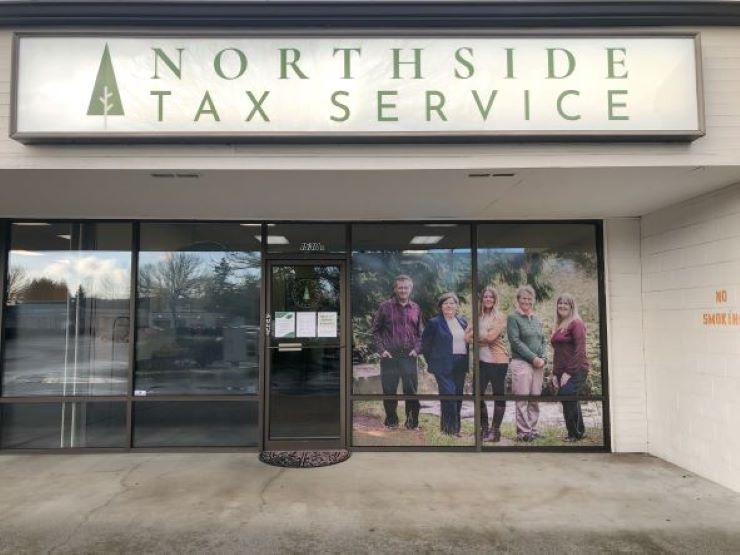As this year draws to a close and the next begins anew, it’s the perfect time to review your discretionary spending and create opportunity to benefit your community and yourself. In light of recent catastrophic flooding and with the holidays in full swing, consider charitable donations to local non-profit organizations while making smart choices for this upcoming tax season. Crystal Sprague, Registered Tax Return Preparer, ITIN Acceptance Agent and Notary Public of Northside Tax Service in Bellingham, discusses the best ways to benefit you and your community when donating to charity.
Where to begin when so many need help? Sprague suggests a simple solution: focus on what you love and cherish in your community. “Start with an organization that touches your heart,” she says. “Find the organizations you are most aligned with and go from there.”

When donating, understand the types of charitable giving. “There are two different types of charitable contributions,” says Sprague. “Charitable contributions as gifts to non-profit organizations that are tax deductible, and donations to individuals without being tax deductible.”
Cash and Checks
Deductible contributions can be broken down further into cash, non-cash, and volunteerism.
Cash donations are 100% deductible, but there are helpful guidelines to adhere to. “If you’re doing cash donations, it must be done [using] literal cash, check, debit, or credit card,” Sprague says. “If it’s $250 or more of a single donation, you have to have a letter [from the organization].” It’s essential that you attain documentation of all cash donations to show the IRS when itemizing.
When donating by paper check, the most important rule is to keep your receipts. “With checks, always have your receipt,” says Sprague. “If [an organization] sends you a letter and they want you to donate a specific amount, you want to keep a copy of that letter to provide to your tax preparer with the date and the check number, as well.” Regardless, Sprague makes it clear that any donation over $250 by cash, credit, debit, or check must have a letter provided by the organization to which you donated that amount.

Non-Cash
Non-cash donations are contributions of items for which you can get a receipt.
“Say you collect a bunch of household items you are going to give to Goodwill or Value Village, or wherever you are dropping off donations, and you get a little receipt from them,” Sprague says. “You need to make a list of what you have donated, and you need to give it a valuation. There are books on how to value your used goods or you can use the valuation based on how much it would sell for inside of Goodwill or Value Village for that type of an item.”
Once again, it is imperative that you document and compile a comprehensive collection of your receipts for non-cash donations. “Staple your receipt to your list, write down the date that you donated it, and then use that to give to whoever does your taxes,” says Sprague. “If you donate more than $500 a year of non-cash donations, there are forms you have to fill out with your tax return.”
Volunteerism
Deducting volunteer-based contributions can be tricky. Basically, items that have a dollar amount used to volunteer your time are deductible—but your time is not.
“Any expenses you used for that volunteerism, you can deduct,” Sprague says. “For example: if it was a bake sale or something to that effect, you can take off the ingredient expense and you can take off the mileage for traveling to it, but your time is not deductible. Most people do not claim those expenses, but you can. It is hard to prove that to the IRS if you get audited.”
Things to Keep in Mind When Donating
One of the most important factors to charitable giving is verifying that you’re contributing to a reputable organization. The IRS website has a handy tool you can use to look up an organization of your choosing and double check that it is a 501(c)(3) non-profit. It’s vital to remember your donations to 501(c)(3) organizations are deductible, whereas amounts given to causes not under that specific non-profit designation cannot be deducted on your taxes. That helpful link is found here.
This year, the IRS has a change from previous tax seasons that will most likely be temporary but is also worth noting if you claim standard deduction.
“You can deduct $600 for a married couple. That is different this year; most people in the past had to itemize and give up other standard deductions to give donations,” says Sprague. “Last year, for 2020, it was $300 for single or married couples and this year it is $300 for single and $600 for married that can be taken right off their taxable income. Again, you want to make sure you have those receipts.”

Also, those who itemize may be able to deduct up to 100% of their AGI (Adjusted Gross Income) while, in previous years, it has been 20% to 60%.
Any way you slice the pie, it’s a year of opportunity coming out of the pandemic. Sprague and her colleagues at Northside Tax Service are ready to sort out your taxpaying and assist you in accurately crediting your charitable contributions.
As a local tax service dedicated to supporting their regional businesses and neighbors, Northside goes that extra mile for its community. Before tax season starts, find the time to contribute to local non-profit organizations and make sure your money is benefitting the communities you know and love.
Sponsored










































